
Chinese style - (other Rus. China through Tatar. Kytai from Turk, kytan - “middle”) - the traditional art of China is an original and holistic historical type, formed over the centuries from different ethnic sources.
Chinese culture is a special consciousness and worldview. China, with its specifics of living conditions, has created its own understanding of the organization of living space. It was embodied in the teachings of Feng Shui, which originated more than 3000 years ago.
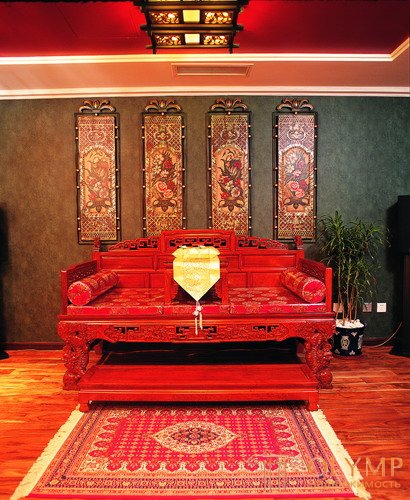
Chinese style in the interior, photo
The main elements of Chinese style:
In Europe, the products of Chinese art came into vogue in the XVIII century. In both rich homes and poor dwellings, there were a wide variety of Chinese handicrafts that were popular for their exotic forms. Before Europe began to make porcelain (D. Böttger, 1707), rich people collected mysterious and expensive Chinese porcelain.
The “Chinese style” had the strongest influence on the English furniture art of the mid-18th century, and in particular on one of the periods of activity of the famous English furniture maker Thomas Chippendale. In the history of English furniture, it was a brief, whimsical fashion. Characteristic of this fashion was the widespread fascination with the Chinese grid, decorative strips, the so-called. "Chinese".
Objects of Chinese art that were in demand due to their exotic, valued too high. Of course, among them were real values, such as, for example, many varnish objects, fine china, and delicate ornamentation; However, it should be noted significant drawbacks: patterned and crushed lines.
China was a feudal country with stable traditions and a highly constrained artistic perception. With unchanged rights and customs for 2000 years, right up to political liberation, China has not experienced any deep development.
The universal material from which the Chinese made thousands of things was bamboo. In the hands of the resourceful Chinese artisan, he served for the manufacture of structures, lattices, partitions in rooms, various wickerwork, furniture and for many other purposes.
Chinese architecture blends with nature. Because of the abundance of rain in China, a high roof with steep slopes has long been used. The house in several tiers with roofs one above the other testified to the nobility of the owner. Applying the curved rafters, the Chinese created the original forms of curved ramps with raised corners so that the canopy would not obstruct the access of light. Under the rafters were brought short bars of wood, creating stepped ledges-consoles. They were attached to the board with carved ornaments and silhouettes of dragons. The tree was covered with bright red or black lacquer with gold and inlaid with mother of pearl. Chinese pagodas are not tectonic, but organic in unity with the surrounding landscape; they grow out of the ground as easily and naturally as trees, flowers, or mushrooms after rain. The silhouettes of the Tibetan temples resemble the shapes of the mountains or the gentle hills on the slopes of which they are located. All this beauty is not so much construction in the European sense of the word (as a way of sheltering from the elements), but, on the contrary, creating the best conditions for contemplation of nature by means of art.
Today's interest in design in the Chinese style arose partly as a result of the fascination with such exotic things as the feng shui teaching (English feng-shui), which connects changes in the fate of a person with the surrounding nature. The whole matter, according to the adherents of these views, is in the flow of Qi energy, penetrating everything around, and it does not depend on the style in which the interior of your apartment is made. It must certainly contain five elements, the totality of which symbolizes perfection - water, fire, wood, metal and earth; then comfort and harmony can come to the house.
The arrangement of the dwelling of the Chinese is very different in style from other peoples of the East. The measured way of life and the philosophical attitude to everything happening have played their part in this.
“You live in time and space, and we are only in space,” says Chinese wisdom. In the Chinese-style interior there are no sharp corners, bulky furniture, and the one that is, is no different variety. As a material for manufacturing, both furniture and various other items, durable, but elastic bamboo is widely used. The furniture was decorated with sophisticated multi-layer varnishing technique. For decoration used black lacquer thread.
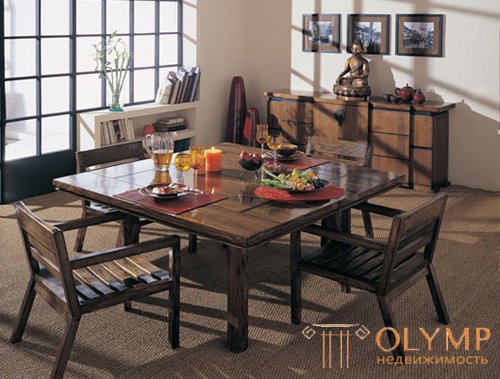
Chinese style in the interior, photo
In contrast to the ascetic simplicity of Japan, the Chinese more fully utilize the internal space of the premises, forming niches and arches for arranging decorative objects and toys.
In contrast to the front furniture, cabinets were simple household items. Exquisitely decorated lacquer tables with resistant carving, on which decorations and vases were placed, complete the rich furnishings of the dwelling.
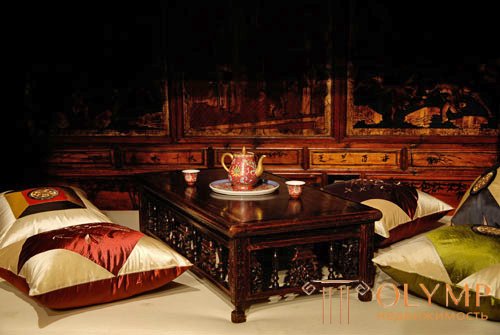
Chinese style in the interior, photo
In furniture, the intarsia technique well-known to Europeans is widely used - a mortise decoration made of the finest plywood of various shades on the surface of tables and cabinets. But, unlike the European one, which has one level with the main plane, the Chinese one is above the surface.
The furniture in the homes of noble Chinese was different from the furniture of commoners. The main items of furniture among the furniture were loungers, chairs and tables. All items were made using bamboo and had mostly rectangular shapes.
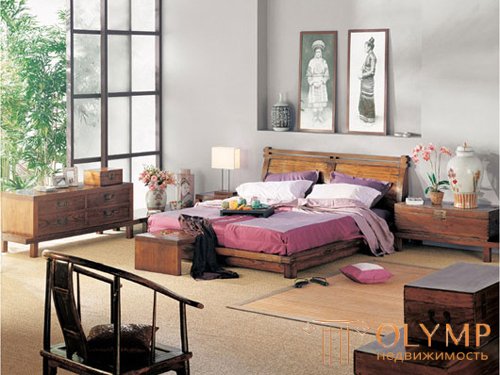
Chinese style in the interior, photo
Another distinctive feature, to this day living, perhaps, only in China, is the complete absence of curtains on the windows, and there are no chandeliers in the houses, although electricity, of course, lights the houses, but with the help of ordinary lighting lamps.
The Chinese interior is bright, fantastic, to some extent even exotic. But at the same Chinese-style décor is relaxing, comfortable and light.
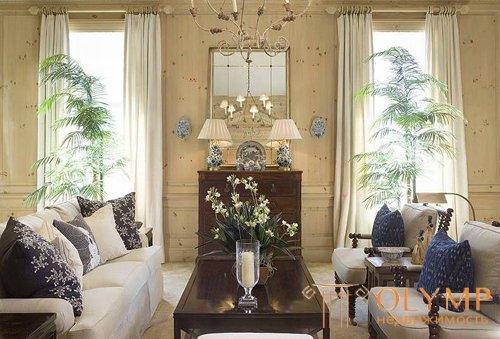
Chinese style in the interior, photo
The main idea of the arrangement of the Chinese dwelling consists in interweaving the real with the mythology, where the dragon is the main actor - the most powerful of all animals.
Typical Chinese interior design colors are red and black. Red color is saturated, juicy, primary, the color of a fire dragon, the color of energy. Red color, as it is known, has many associations, both with philosophical and national thinking. Also use black, blue, yellow, gold, green, and more. others
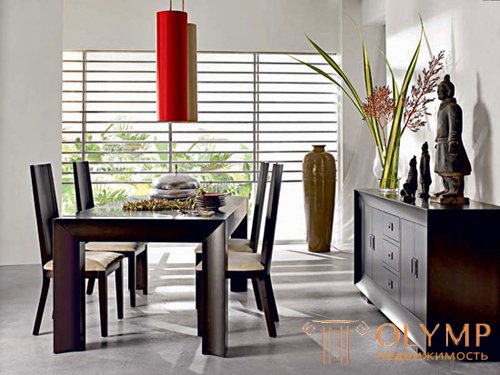
Chinese style in the interior, photo
The decoration of the home is considered to be various products from traditional cane and paper. The walls of modern apartments are decorated with rugs made of reeds, masks of the Peking Opera, and in the interiors of the middle class there is often progressive painting.
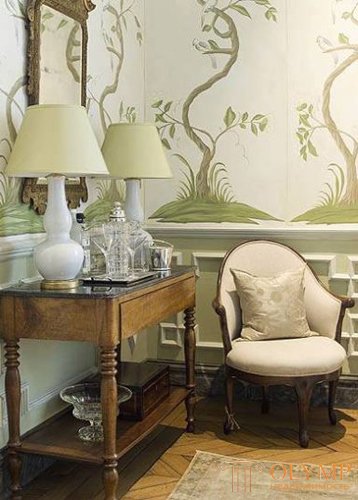
Chinese style in the interior, photo
Interlacing of flowering cherry branches on a bright red background, golden dragons, flowers and pagodas - these are the classic Chinese style for decorating pillows, blankets and bedspreads. Hieroglyphs will give mysteriousness to any room, and in order for the pictures to not visually suppress the space, it is enough to put curtains on the curb or enclose them in a wall panel.
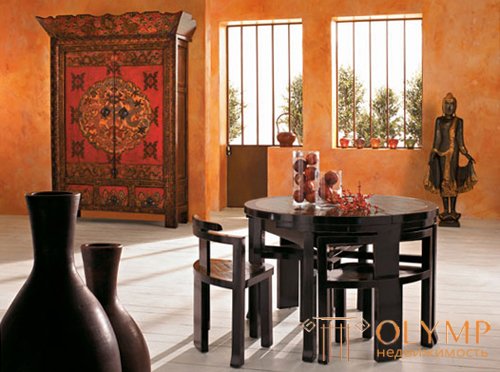
Chinese style in the interior, photo
It is believed that the wall covering will look the most harmonious in the house with a Chinese-style design. Very conventionally, it is divided into three unequal groups: pure synthetic, synthetic fabric with the addition of natural fibers and completely natural. Silk fabric looks the most attractive from the last group, which inevitably affects its price; however, no less than the cost of other natural fabric wall coverings.
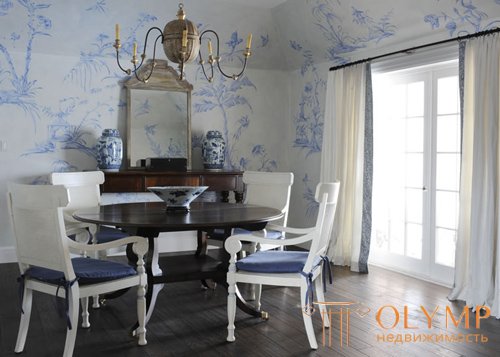
Chinese style in the interior, photo
Worthy addition to the interior with a Chinese-style design will be mirrors (their location is very strictly determined by Feng Shui), combinations of fancy shelves and shelves, good reproductions of calligraphic paintings from China depicting birds, flowers or animals. Numerous unusual objects and details of the decor from the Middle Kingdom will help you to create a mysterious oriental atmosphere in the house; these can be feng shui charms, amulets, jade products and, of course, famous Chinese porcelain.
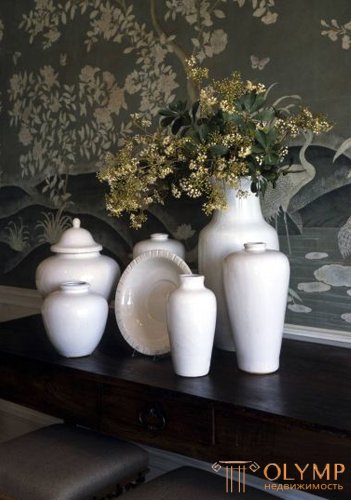
Chinese style in the interior, photo
Decorative furniture - the most important question in the Chinese interior. Characteristic is carved, inlaid, lacquered, furniture in shades of black and red, along with images (figurines) of dragons and other mythological images.
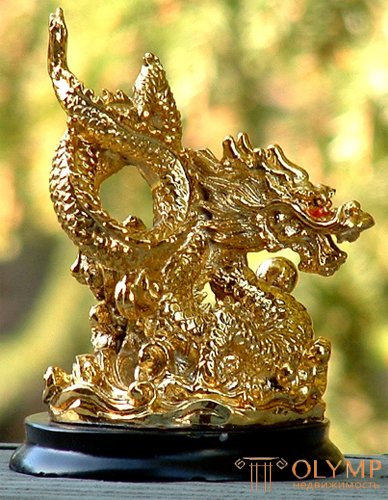
Chinese style in the interior, photo
Feng Shui is the guiding principle in Chinese interior, and therefore the tendency is to use furniture made from natural wood rather than from modern materials. Choosing furniture in the Chinese style, do not forget about the main Chinese principle - harmony in everything. Therefore, the furniture should not be too much.

Chinese style in the interior, photo
If we talk about the bedroom in the Chinese style, then the main thing when decorating it is that the furnishings look rich, but unpretentious. For example, luxury silk bedding or satin accessories will work well.
It’s nice to use Chinese paper lanterns for lighting, they will envelop the room with a soft, warming and relaxing light.
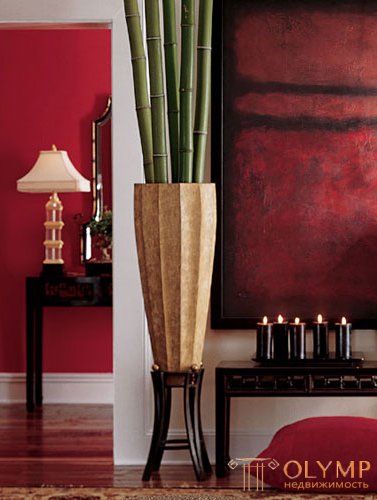
Chinese style in the interior, photo
Lastly, the artistic mess does not fall into the category of Chinese house. Here everything should be precisely distributed and in harmony.
The arrangement of the dwelling of the Chinese is very different in style from other peoples of the East. The specifics of the true Chinese style determines a special approach to the organization of space. The basis of this approach is Feng Shui.
Chinese interior style, of course, largely built at the expense of characteristic accents. But one cannot do without other recognizable details in order to at least approximately convey the spirit of the Middle Kingdom. The easiest way is to fill the inside of the house with accessories that would unmistakably be guessed by China.
Что бы оставить комментарий войдите
Комментарии (0)